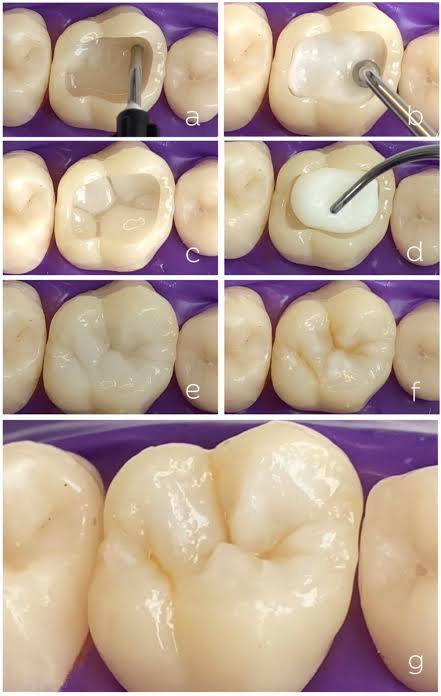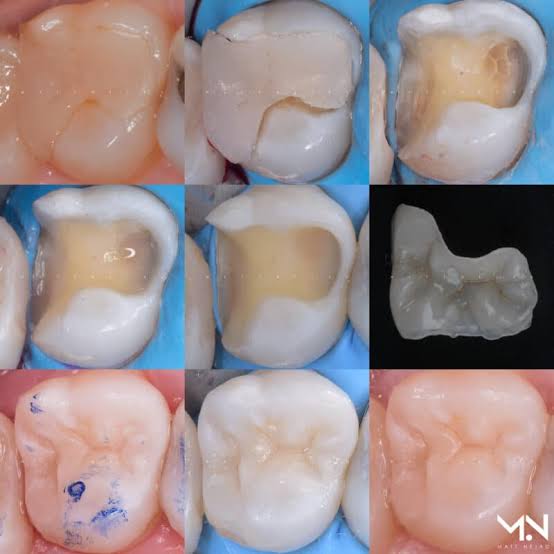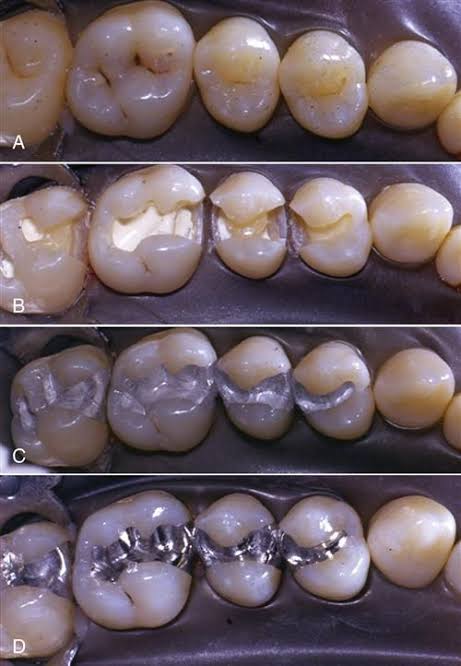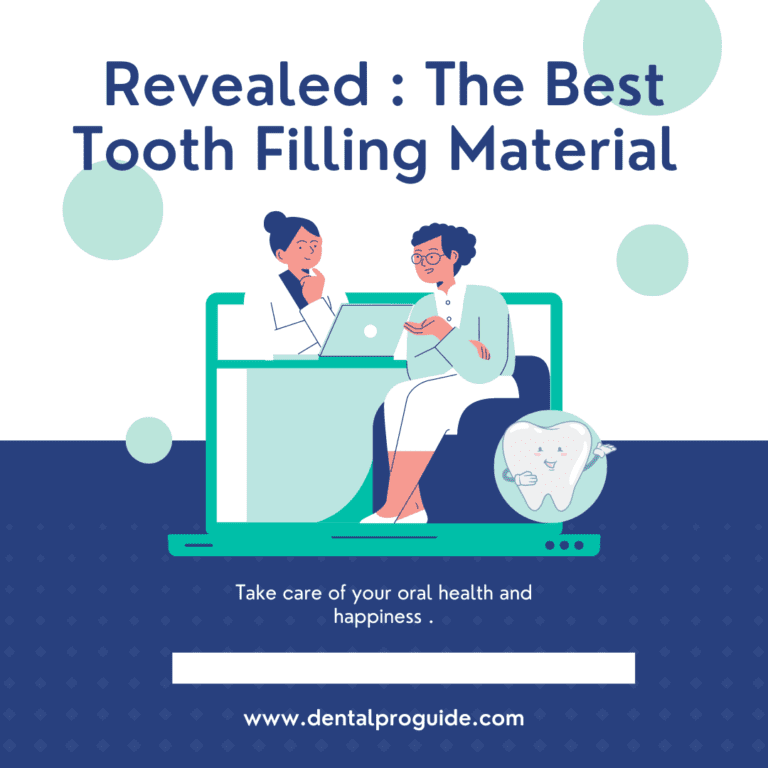Are you aware which is the best tooth filling material for maintaining your dental health? If not, you’re about to dive deep into the realm of dental restorations which will equip you with the insights and expertise of a world-class dental expert.
From understanding the ins and outs of tooth decay to exploring various filling options, this informative guide is designed to empower you with the knowledge you need to make informed decisions about your dental care.
But this is not just any ordinary blog post. It’s a treasure trove of information meticulously crafted to guide you through every step of the tooth filling journey.
Whether you’re seeking clarity on different filling materials, curious about the procedure itself, or want to know how to maintain your fillings for optimal longevity, we’ve got you covered.
Our goal is to empower you to take charge of your dental health and make educated decisions alongside your trusted dental professional.
By the end of this blog post, you’ll be armed with the knowledge and confidence to make informed choices, ensuring the longevity and beauty of your precious smile.
Table of Contents
Understanding Tooth Decay : Causes and Risk Factors
Tooth decay also known as dental caries, is a multifactorial process influenced by various causes and risk factors.
By delving into the intricacies of what contributes to tooth decay, we can gain valuable insights into prevention and early intervention strategies.
Poor Oral Hygiene:
Insufficient brushing and flossing allow plaque which is a sticky film of bacteria to accumulate on teeth, leading to acid production and enamel erosion.
Dietary Factors:
Regular consumption of sugary and acidic foods and beverages provides fuel for bacteria to produce acids that attack tooth enamel.
Additionally, frequent snacking or sipping on such substances can prolong acid exposure.
Inadequate Saliva Flow:
Saliva plays a crucial role in neutralizing acids and remineralizing teeth.
Conditions like dry mouth (xerostomia) or medications that reduce saliva flow can increase the risk of tooth decay.
Microbial Factors:
Certain types of bacteria, particularly Streptococcus mutans, are strongly associated with tooth decay.
These bacteria metabolize sugars and produce acids that contribute to enamel demineralization.
Enamel Quality and Thickness:
Individuals with naturally thinner or weaker enamel may be more prone to tooth decay due to reduced protective barriers against acid attack.
Genetic Predisposition:
Some individuals may inherit genes that affect their susceptibility to tooth decay, such as enamel hypoplasia or amelogenesis imperfecta
Early Detection is Crucial
Early detection of tooth decay offers significant advantages in terms of preserving tooth structure, minimizing discomfort, and avoiding more extensive and costly dental treatments.
Here are some key reasons why early detection is crucial:
Preservation of Tooth Structure:
Detecting decay in its early stages allows for conservative treatment approaches, such as minimal invasive fillings, that preserve as much healthy tooth structure as possible.
Prevention of Pain and Discomfort:
Addressing decay early can prevent or minimize toothache, sensitivity, and discomfort associated with advanced stages of decay.
Avoidance of Complications:
Untreated tooth decay can lead to complications, such as abscesses, root infections, or the need for more invasive procedures like root canal therapy or tooth extraction.
Cost Savings:
Early intervention is generally less complex and costly compared to extensive dental treatments necessitated by advanced decay.
Regular dental check-ups and early detection can save patients money in the long run.
The Best Tooth Filling Materials
1. Composite Filling Material
Composite fillings have gained popularity due to their natural appearance and versatility. They are the white coloured filling used to fill the tooth cavity .
First the tooth decay is cleaned out and then a composite material is placed in the cavity and cured with an curing light layer by layer. It is a single appointment procedure.

Material Characteristics and Aesthetic Appeal:
Composite fillings are made of a mixture of tooth-colored resin and filler particles, such as glass or quartz.
This material can be custom-shaded to match the natural color of the patient’s teeth, making them virtually indistinguishable.
Composite fillings bond directly to the tooth structure, providing additional support and sealing against bacteria.
| S No. | Advantage | Considerations |
|---|---|---|
| 1 | Aesthetic Appeal | Composite fillings can match the natural color of the teeth, providing a more natural and pleasing appearance. |
| 2 | Versatility | Composite fillings can be used to treat both front and back teeth, offering versatility in dental restorations. |
| 3 | Preservation of Natural Tooth Structure | Composite fillings require less removal of healthy tooth structure compared to amalgam fillings, preserving more of the natural tooth. |
| 4 | Bonding Strength | Composite fillings bond well to the tooth structure, providing additional support and stability. |
| S No | Disadvantages | Considerations |
|---|---|---|
| 1 | Durability | Composite fillings may not be as durable and can be more prone to chipping or staining over time. |
| 2 | Cost | Composite fillings tend to be less expensive compared to ceramic restorations but more expensive than amalgam fillings due to the materials and techniques involved. |
| 3 | Post-Operative Sensitivity: | Some individuals may experience temporary tooth sensitivity after getting a composite restoration. |
| 4 | Reparability: | Composite fillings can be easily repaired or modified if damaged |
2. Ceramic and Porcelain Fillings
Ceramic and porcelain fillings, also known as inlays or onlays, provide a natural-looking and highly durable option for dental restorations.
First the tooth decay is cleaned out and then a ceramic restoration is fabricated indirectly outside the mouth and then fixed into the tooth cavity in the second appointment.So it is a two appointment procedure.

Understanding the benefits, considerations, and the suitability of these fillings for different tooth locations can help patients make informed choices.
| S No | Advantages | Consideration s of Ceramic and Porcelain Restorations |
|---|---|---|
| 1 | Aesthetic Appeal | Ceramic and porcelain restorations can closely mimic the natural appearance of teeth, providing the MOST aesthetic result. |
| 2 | Biocompatibility | Ceramic and porcelain materials are generally well-tolerated by the body, reducing the risk of allergic reactions or sensitivities. |
| 3 | Stain Resistance | Ceramic and porcelain materials are highly resistant to staining, allowing for long-lasting aesthetics. |
| 4 | Longevity | With proper care and maintenance, ceramic and porcelain restorations can have a long lifespan, lasting 10 years or more. |
| 5 | Tissue Compatibility | Ceramic and porcelain restorations have excellent compatibility with the surrounding gum tissue, promoting healthy gum health and gumline aesthetics. |
| S.No | Disadvantages | Consideration sof Ceramic and Porcelain Restorations |
|---|---|---|
| 1 | Fragility | Ceramic and porcelain restorations are more prone to chipping or fracturing compared to other restorative materials such as metal or composite. |
| 2 | Cost | Ceramic and porcelain restorations tend to be more expensive compared to other types of dental restorations due to the materials and techniques involved. |
| 3 | Preparation and Placement: | Ceramic and porcelain restorations typically require more extensive tooth preparation and multiple visits to the dentist for placement. |
| 4 | Sensitivity: | Some individuals may experience temporary tooth sensitivity after receiving ceramic or porcelain restorations. |
| 5 | Repairability: | In the event of damage or fractures, ceramic and porcelain restorations may require complete replacement rather than simple repairs. |
3.Amalgam Fillings
Amalgam fillings have been widely used for many years and have proven to be durable and reliable.
Amalgam fillings consist of a mixture of metals, including silver, tin, copper, and mercury.
The addition of mercury allows the mixture to be pliable, facilitating its placement and ensuring a secure bond with the tooth structure.
Amalgam fillings are known for their exceptional durability, with a lifespan of 10 to 15 years or more.

| S No | Advantages | Considerations |
|---|---|---|
| 1 | Strength and Durability | Amalgam fillings are known for their exceptional strength and resistance to wear and tear. |
| 2 | Cost-Effectiveness | Amalgam fillings are generally more affordable compared to other types of dental fillings. |
| 3 | Longevity | Amalgam fillings have a proven track record of long-term durability, with many lasting over 10 years. |
| 4 | Versatility | Amalgam fillings can be used in various situations, including large cavities or areas of high chewing forces in posterior teeth. |
| 5 | Ease of Placement | The placement process for amalgam fillings is relatively straightforward, requiring less technique sensitivity compared to certain other types of fillings. |
| 6 | Bacterial Resistance | Amalgam fillings have been shown to provide a strong seal, inhibiting the growth of bacteria and reducing the risk of recurrent decay. |
| S No | Disadvantages | Considerations |
|---|---|---|
| 1 | Silver-Gray Color | Amalgam fillings have a silver-gray color that may be more noticeable in certain areas of the mouth. |
| 2 | Mercury Concerns | The presence of mercury in amalgam has raised concerns for some individuals. However, extensive research has shown that the level of mercury released is minimal and considered safe. |
| 3 | Tooth Discoloration | Over time, amalgam fillings may cause discoloration of the surrounding tooth structure, leading to a grayish appearance. |
| 4 | Sensitivity | Some individuals may experience increased sensitivity to hot or cold temperatures after receiving an amalgam filling. |
| 5 | Removal Considerations | In cases where amalgam fillings need to be replaced or removed, extra precautions should be taken to minimize mercury exposure during the process. |
Best tooth filling material for different situations
| S No. | Situation | Restoration Material |
|---|---|---|
| 1 | Restoring posterior teeth with high chewing forces | Amalgam Fillings |
| 2 | Cost-effective option for dental restorations | Amalgam Fillings |
| 3 | Restoring small to medium-sized cavities | Composite Fillings |
| 4 | Aesthetic considerations for visible front teeth | Composite Fillings |
| 5 | Restoring front teeth for best aesthetics | Ceramic/Porcelain |
| 6 | Allergic or sensitivity concerns with other materials | Ceramic/Porcelain |
| 7 | Desire for stain-resistant and natural-looking restorations | Ceramic/Porcelain |
| 8 | Improving tooth aesthetics and strength | Ceramic/Porcelain |
| 9 | Preference for longevity and durability | Ceramic/Porcelain |
| 10 | Extensive tooth damage or large cavities | Ceramic/Porcelain |
| 11 | Restoring weakened or fractured teeth | Ceramic/Porcelain |
Potential Complications and Risks
Metal Allergies:
Some individuals may have allergies to specific metals used in dental fillings, such as nickel or mercury in amalgam fillings.
Allergic reactions can manifest as oral discomfort, swelling, redness, or even systemic symptoms.
It is important to inform your dentist about any known metal allergies or sensitivities.
Composite Sensitivity:
Although composite fillings are generally well-tolerated, some individuals may experience temporary sensitivity or irritation after placement.
This sensitivity usually subsides within a short period.
However, if it persists or becomes severe, it is advisable to consult your dentist.
Cracks, Wear, or Fracture of Fillings
Over time, tooth fillings may experience wear and tear, potentially leading to cracks or fractures.
Understanding the factors that contribute to these complications can help patients be aware of the risks and take preventive measures.
- Chewing Forces: Fillings, especially those in posterior teeth, are subjected to significant biting forces during chewing. Over time, this repetitive stress can lead to wear, small cracks, or even complete fracture of the filling material.
- Bruxism: Individuals who grind or clench their teeth, a condition known as bruxism, are at an increased risk of filling wear, fracture, or dislodgement. The excessive forces exerted during grinding can compromise the integrity of the filling and surrounding tooth structure.
- Age and Material Properties: The lifespan of a filling can vary depending on factors such as the patient’s age, oral hygiene practices, and the type of filling material used. Some materials, such as amalgam, are known for their durability, while others, like composite fillings, may be more prone to wear and degradation over time.
Decay in a Filled Tooth and Secondary Cavities
Even with proper care, there is a risk of recurrent decay and the development of secondary cavities around existing fillings.
Understanding the causes and preventive measures can help patients mitigate these risks.
- Marginal Leakage: Over time, the interface between the filling material and the natural tooth structure can develop gaps or microleakage, allowing bacteria to penetrate and cause decay. Regular dental check-ups are essential to detect and address such issues early.
- Inadequate Oral Hygiene: Insufficient oral hygiene practices, such as inadequate brushing or flossing, can contribute to plaque accumulation and subsequent decay around existing fillings. Thoroughly cleaning around the fillings and maintaining a proper oral hygiene routine is crucial.
- Proximity to Gumline: Fillings located near the gumline are particularly susceptible to bacterial accumulation and decay. Special attention should be given to cleaning these areas, and dental professionals may recommend additional preventive measures, such as dental sealants or fluoride treatments.
Maintaining and Caring for Tooth Fillings
A. Oral Hygiene Practices for Long-lasting Fillings
Proper oral hygiene practices are crucial for maintaining the longevity and integrity of tooth fillings.
Implementing the following habits can help ensure the longevity and health of your dental restorations.
- Brushing Technique: Use a soft-bristle toothbrush and fluoride toothpaste to gently clean your teeth, paying extra attention to the areas around the fillings. Utilize a circular or vibrating motion to effectively remove plaque without putting excessive pressure on the fillings.
- Flossing: Regular flossing is essential to remove plaque and food particles from between the teeth and around the fillings. Gently guide the floss between your teeth and slide it up and down, taking care not to snap it forcefully against the filling.
- Antimicrobial Mouthwash: Incorporating an antimicrobial mouthwash into your oral hygiene routine can help reduce the bacterial load in your mouth and protect the surrounding tooth structure. Consult with your dental professional to choose an appropriate mouthwash.
B. Diet and Lifestyle Considerations
Making conscious choices about your diet and lifestyle can significantly impact the longevity and overall health of your tooth fillings. Consider the following factors when caring for your dental restorations:
- Limit Sugary and Acidic Foods: Minimize your consumption of sugary and acidic foods and beverages, as they can contribute to enamel erosion and the development of new cavities. Opt for a well-balanced diet rich in fruits, vegetables, whole grains, and lean proteins to support overall oral and systemic health.
- Avoid Excessive Pressure on Fillings: Be mindful of habits that can place excessive pressure on your fillings, such as chewing on hard objects like ice, pencils, or opening packages with your teeth. These actions can potentially damage or dislodge the fillings.
- Tobacco and Alcohol: Avoid or minimize the use of tobacco products and excessive alcohol consumption. These substances can negatively impact your oral health, including the integrity and longevity of your fillings.
C. Regular Dental Check-ups and Monitoring
Regular dental check-ups are crucial for monitoring the condition of your fillings and overall oral health. Your dental professional can detect early signs of potential problems and provide timely intervention. Consider the following points when it comes to regular check-ups:
- Routine Examinations: Schedule regular dental examinations, typically every six months or as recommended by your dental professional. During these visits, your dentist will assess the condition of your fillings, check for any signs of decay or damage, and perform professional cleaning to remove plaque and tartar.
- X-rays and Diagnostic Tests: Dental X-rays and other diagnostic tests may be recommended periodically to evaluate the integrity of your fillings and detect any underlying issues that may not be visible to the naked eye.
- Professional Maintenance: Your dental professional may recommend additional preventive measures, such as dental sealants, fluoride treatments, or adjustments to your bite, to ensure the long-term success of your fillings.
Conclusion
Remember, maintaining the health and longevity of your tooth fillings goes hand in hand with maintaining overall oral health. By practicing good oral hygiene, making informed choices, and seeking professional care, you can enjoy the benefit of a long-lasting, functional ,aesthetically pleasing and best tooth filling material.
Please note that the choice of the best tooth filling material type may depend on various factors, including the patient’s specific dental condition, aesthetic concerns, budget, and dentist’s recommendation. It’s important to consult with a dental professional to determine the most suitable filling option for individual cases.
Your dental professional is your partner in oral health, and their expertise and guidance are invaluable. Don’t hesitate to reach out to them with any concerns or questions you may have.
Invest in your smile and oral well-being for a lifetime of healthy teeth and confident smiles.
To know “HOW TO GET RID OF BAD BREATH” Click Below
To read about “HOW DRINKING WATER BENEFITS ORAL HEALTH” Click below
